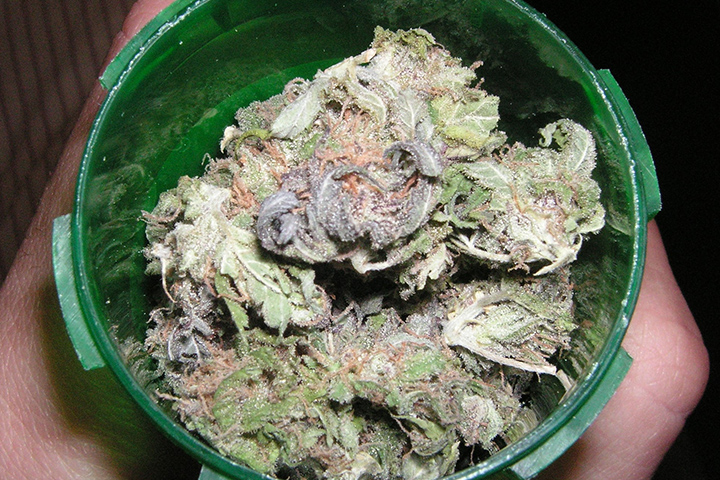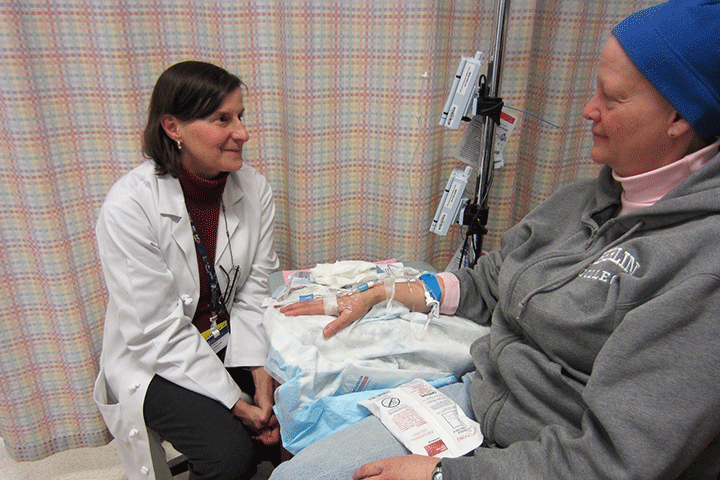Medical Marijuana: More Science Could Help Clear the Air

Like politics and religion, recreational marijuana is one of those subjects that ignites furor on both sides of an argument.
Of course it should be legal, say some. No way, say others. But using marijuana to help with what ails you is becoming much more widely accepted. After all, everyone seems to know someone who has benefitted from medical marijuana, whether for chronic pain or for the nausea and appetite loss that are common side effects of chemotherapy.
In fact, more than 80 percent of Americans surveyed say doctors should be able to prescribe marijuana to patients, according to the results of a Yahoo News/Marist poll. Only 14 percent said they oppose legalizing medical marijuana, and 4 percent said they weren’t sure either way.
“There is no doubt patients are interested in learning more about medical marijuana, but part of the issue is that there is a lack of really good science supporting its use,” says Dr. Richard Lee, Medical Director, Integrative and Supportive Oncology Program, UH Seidman Cancer Center in Cleveland, OH and the Helen Moss Cancer Research Foundation Professor of Integrative Oncology at Case Western Reserve University School of Medicine. He believes that, in general, legislation has outpaced the research. “Patients are convinced that medical marijuana will help them because they read great stories about how it can ease pain or help with their condition when other drugs have failed,” he says. “Maybe it will help, but maybe it won’t. So what’s clear is that more research is needed. I think that will happen and that’s when we are going to get the answers we really need.”
Although marijuana is now legal for medical use in the majority of states and the District of Columbia, the federal government still considers possession or use to be a crime. That is one reason for the lack of research. Another is that marijuana is considered by the Drug Enforcement Administration (DEA) to be a Schedule 1 substance. Schedule 1 drugs, substances, or chemicals are defined as drugs with no currently accepted medical use and a high potential for abuse, according to the DEA. Some examples of Schedule I drugs are: heroin, lysergic acid diethylamide (LSD), and 3,4-methylenedioxymethamphetamine (ecstasy). Because of this, researchers hoping to do U.S. Food & Drug Administration (FDA)-approved studies about marijuana must get plants from the federal government, which has only allowed one facility to grow marijuana for scientific study.
How Does it Work?
Medical marijuana is essentially the same as recreational marijuana, but instead of seeking a so-called “high,” patients use it to treat a specific condition.
Scientists know that marijuana is made up of numerous chemicals called cannabinoids, and each cannabinoid has a different effect on the body. Very simply, cannabinoids are somewhat similar to chemicals that play a role in appetite, memory, movement, and pain. One well-known cannabinoid is delta-9-tetrahydrocannabinol (THC.) THC is the chemical responsible for the high people feel when they smoke, vape, or eat products containing marijuana. Another cannabinoid is called cannabidiol (CBD), which also causes a high. CBD has gained a lot of attention for its supposed health benefits.
What Conditions Can Be Treated with Medical Marijuana?
Approved uses for medical marijuana vary from state to state. In general, if medical marijuana is approved in your state the laundry list of accepted ailments is long. Some common approvals include: Alzheimer’s disease, appetite loss, cancer, Crohn’s disease, eating disorders (such as anorexia), glaucoma, mental health disorders like PTSD and schizophrenia, multiple sclerosis, muscle problems, nausea, pain, and cachexia (severe appetite loss/wasting), among others.
What Does the Science Say?
Here’s where things get tricky. One of the best ways to sort through myriad studies is by looking at meta-analyses, which involve combining and analyzing data from numerous studies.
Published in JAMA in 2015, “Cannabinoids for Medical Use: A Systematic Review and Meta-analysis” did just that. What scientists from the U.K.’s University Hospitals Bristol found is that there was only moderate-quality evidence supporting the benefits of medical marijuana, and only for certain conditions.
The researchers reviewed 79 clinical trials of cannabinoids for the following indications: nausea and vomiting due to chemotherapy, appetite stimulation in HIV/AIDS, chronic pain, spasticity due to multiple sclerosis or paraplegia, depression, anxiety disorder, sleep disorder, psychosis, glaucoma, or Tourette syndrome. They found there was “moderate-quality evidence to support the use of cannabinoids for the treatment of chronic pain and spasticity. There was low-quality evidence suggesting that cannabinoids were associated with improvements in nausea and vomiting due to chemotherapy, weight gain in HIV, sleep disorders, and Tourette syndrome.” Cannabinoids were also associated with an increased risk of short-term adverse effects.
The authors wrote, however, that many of the studies were of poor quality, and further research is needed, especially in the form of randomized controlled trials, considered the gold standard in research.
In 2017, the National Academies of Sciences, Engineering, and Medicine wrote The Health Effects of Cannabis and Cannabinoids: The Current State of Evidence and Recommendations for Research, a rigorous review of scientific research published since 1999 about what is known about the health impacts of cannabis and cannabis-derived products. The committee considered more than 10,000 scientific abstracts to reach its nearly 100 conclusions, covering a wide range of ailments. For example, the committee said that more research is needed to determine whether and how cannabis use is associated with heart attack, stroke, and diabetes.
But the committee found evidence to support the premise that patients who were treated with cannabis or cannabinoids were more likely to experience a significant reduction in pain symptoms. For adults with multiple sclerosis-related muscle spasms, there was substantial evidence that short-term use of certain “oral cannabinoids”—man-made, cannabinoid-based medications that are orally ingested—improved their reported symptoms. Furthermore, in adults with chemotherapy-induced nausea and vomiting, there was conclusive evidence that certain oral cannabinoids were effective in preventing and treating those ailments.
FDA-Approved Drugs
Medical marijuana has not been approved by the FDA because there hasn’t been enough research to prove it works. However, the FDA has approved several man-made cannabinoid medicines—dronabinol (Marinol) and nabilone (Cesamet) —to treat nausea and vomiting from chemotherapy. The agency also approved Syndros, a liquid form of dronabinol, in July 2016.
How well these drugs work depends on the patient. “These are really no different than any other drug, since some people will say it helps them, others say it doesn’t, but some don’t want to even try because in their minds they feel there is a stigma attached to marijuana in any form, which is unfortunate because it may help them,” explains Lee.
In early summer 2018, the FDA announced its first approval of a marijuana-based drug called Epidiolex. It is a plant-derived purified form of CBD. The FDA approved it for use in patients aged two and older who suffer from rare and severe forms of epilepsy known as Lennox-Gastaut syndrome and Dravet syndrome, which can develop early in childhood. Epidiolex’s approval also marks the first time the FDA has approved a drug to treat Dravet syndrome. In a statement, the FDA said that although this is a milestone, it is not an approval of marijuana and all of its components. Rather, it is one drug approval for two specific forms of epilepsy. But the FDA supports ongoing, high-quality research.
What’s a Patient to Do?
Sometimes patients want to learn more about medical marijuana, but are uncomfortable talking with their doctors. “And then there are people who use marijuana to ease pain or nausea and are too embarrassed to tell their doctors because they get scared they are going to be judged,” Lee says. Compounding the issue is that some doctors may not be as well-versed in marijuana research as others. The first step, however, is to talk to your doctor, says Lee. “It is never a good idea to withhold information from your doctor, because the truth is we want to help you to the best of our abilities, and the more information we have, the more we can help,” he says. “Doctors and patients need to work together.”
If you live in a state with medical marijuana approval, you will have to get a written recommendation from a licensed doctor. Plus, you have to have a medical condition that is approved by your state for marijuana use. You may also have to apply for an identification (ID) card. Once your paperwork is in place you can buy medical marijuana at a licensed dispensary.





